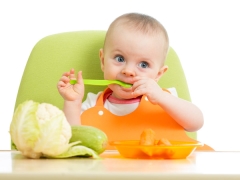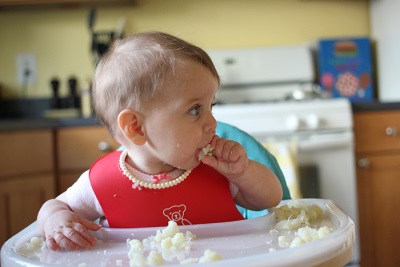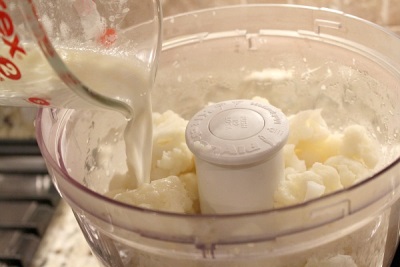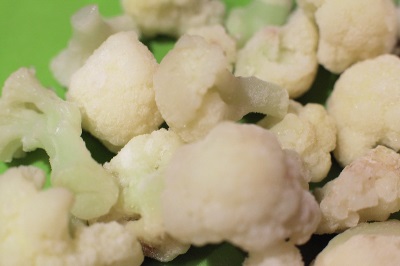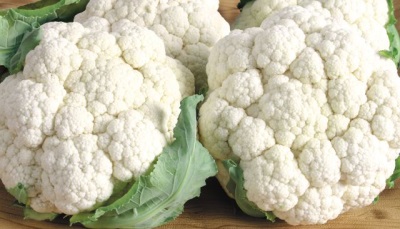How to cook and how to cook cauliflower for complementary foods?
Such a useful tasty vegetable, like cauliflower, appears in the diet of all infants during the introduction of vegetable foods. What is the benefit of this vegetable culture and how to prepare dishes from it for the baby?
pros
- Cauliflower is considered a non-allergenic vegetable, which causes its introduction to the children's diet among the first products.
- Cauliflower lure is recommended for children who take out body weight, and also suffer from constipation and colic.
- Cauliflower tastes good.
- This vegetable is easily digested in the children's intestines, as it contains less fiber than in other types of cabbage.
- Cauliflower will act for the baby as a source of minerals (cobalt, iodine, potassium, phosphorus, iron, magnesium) and vitamins (especially C and A).
- Vegetable proteins from this type of cabbage contribute to the normal functioning of the gallbladder and liver.
- The use of cauliflower strengthens the vascular walls and bones.
- This vegetable is recommended for babies with high levels of sugar.
For the benefits of cauliflower for children and adults, see “Live Healthy”.
Minuses
If you give a cauliflower to the baby in the first year of life in too large a quantity, it may cause a rash, inflammation of the intestine, impaired kidney function and a negative effect on the thyroid gland.
From what age can I give?
Acquaintance with cauliflower occurs during the introduction of vegetables into the children's diet over the age of 6 months. Such a vegetable is usually introduced one of the first. If the baby is on artificial feeding, then you can enter cabbage into its menu a month earlier.
Enter into the diet
The first sample of cauliflower is carried out in the morning feeding. Baby give half or a whole teaspoon of mashed potatoes from this vegetable culture. If the baby’s well-being has not worsened all day, he has not had a rash or loose stools, then the next day the portion can be doubled. Gradually adding more and more spoons of mashed potatoes to the portion of the baby, it is adjusted to 50 g and more. After a month, add some vegetable oil to the puree.
Children older than 8 months to fry cabbage is no longer necessary. Offer them a boiled vegetable as a separate dish or add individual inflorescences to soup either in stew.
Cooking methods
If cabbage was bought on the market or in a store, it is worth holding it for 4 hours in cool water before cooking. Next, the vegetable is thoroughly washed under running water and disassembled into inflorescences.
How much to cook?
Placed in an enamel saucepan in boiling water, pieces of cauliflower should be cooked for about 7-10 minutes. Salt for the first puree of this vegetable is not added. In a double boiler cauliflower is boiled for about 15 minutes, and in a slow cooker - 25 minutes.
How to make mashed potatoes?
Boiled until soft, cabbage can be crushed with a blender or through a strainer to get the consistency of kefir.Often, the resulting chopped cauliflower is too thick, so it is added to the broth or breast milk. If the baby consumes infant formula, it can also be used for breeding puree.
Broccoli and cauliflower with cheese sauce
For this dish, which you can treat kids older than 8 months, you need to take:
- 50 g broccoli;
- 50 g cauliflower;
- 15 g butter;
- 1 tbsp. a spoonful of flour;
- 150 ml of milk;
- 50 g cheddar cheese;
- Bay leaf.
Separate the well-washed vegetables into small florets and boil for about 5-8 minutes until soft, then chop the cabbage into mashed potatoes. To make the sauce, put butter and flour in a small saucepan, cover with milk and add bay leaf. The ingredients of the sauce, brought to a boil, must be constantly stirred in, waiting for the mixture to thicken. After removing the sauce from the heat and pulling out a bay leaf from it, add the grated cheese and wait for it to melt. Mix the sauce with vegetable puree and cool a little, then you can give to the child.
From this amount of products you will receive 8 servings. They can be stored in the refrigerator for a day, as well as freeze.
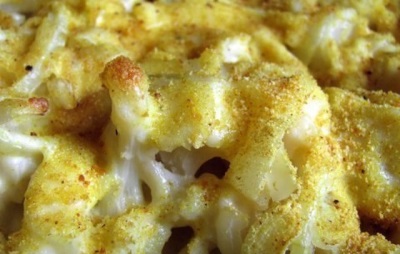
How to freeze for the winter?
Frozen cabbage can help out in the winter. Washed inflorescences should be dried and folded in a bag, then placed in a freezer. Frozen cabbage should be cooked immediately, without defrosting.
Tips for choosing
When buying cauliflower in jars from different manufacturers of baby food, you need to look at the container itself (check its tightness) and for shelf life. As part of this diet should be only cauliflower and water.
When selecting a fresh vegetable for preparing children's dishes, you need to take cabbage, which has no visible damage and black spots. The presence of yellowed leaves at the head will prompt you that the vegetable is stale. Fresh cabbage can be put in the fridge for up to 5-10 days.
If a mother buys frozen cabbage for a child, you should pay attention to the amount of ice (if there is a lot of it, the product has already been thawed out) and the shelf life.
